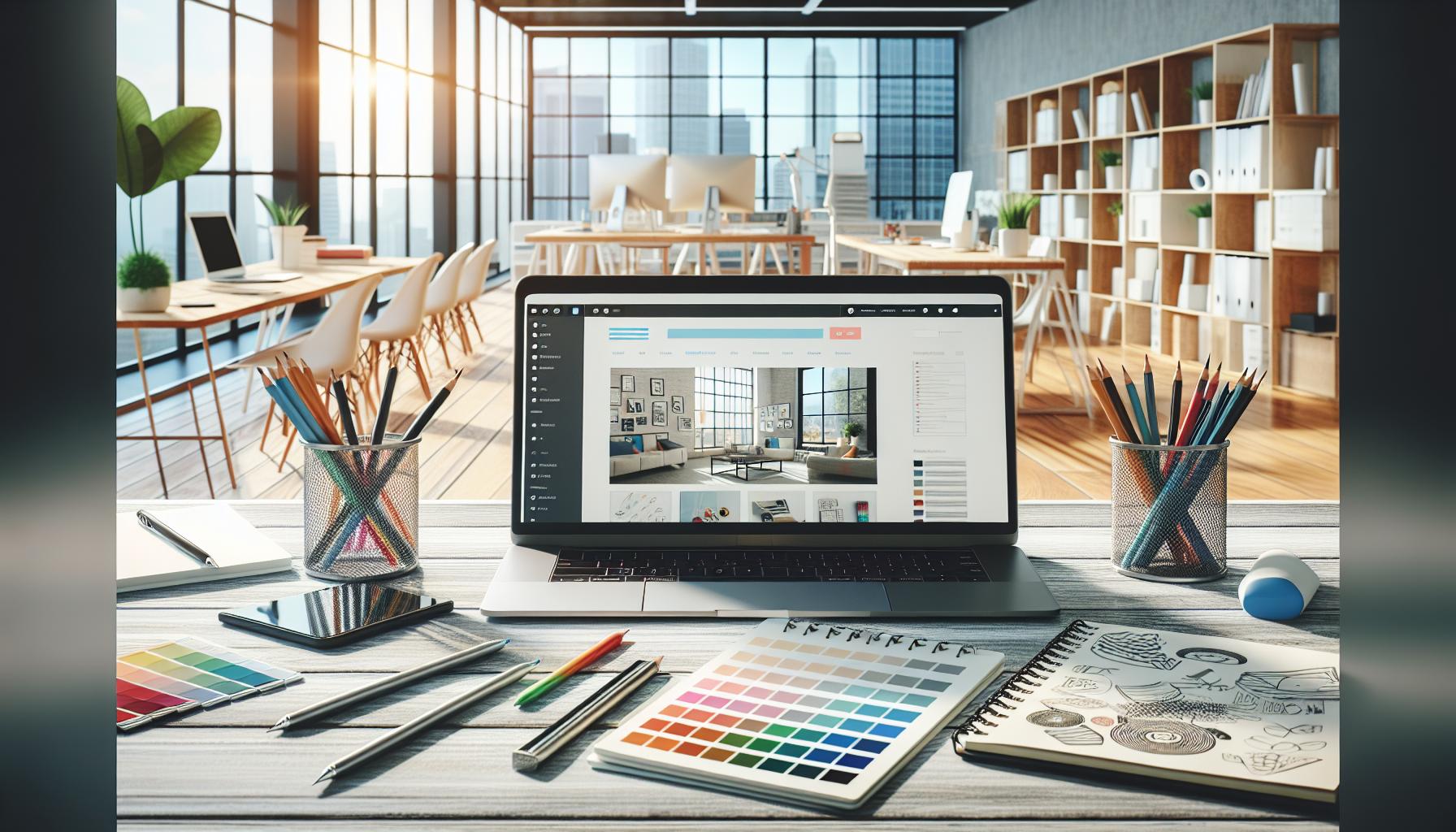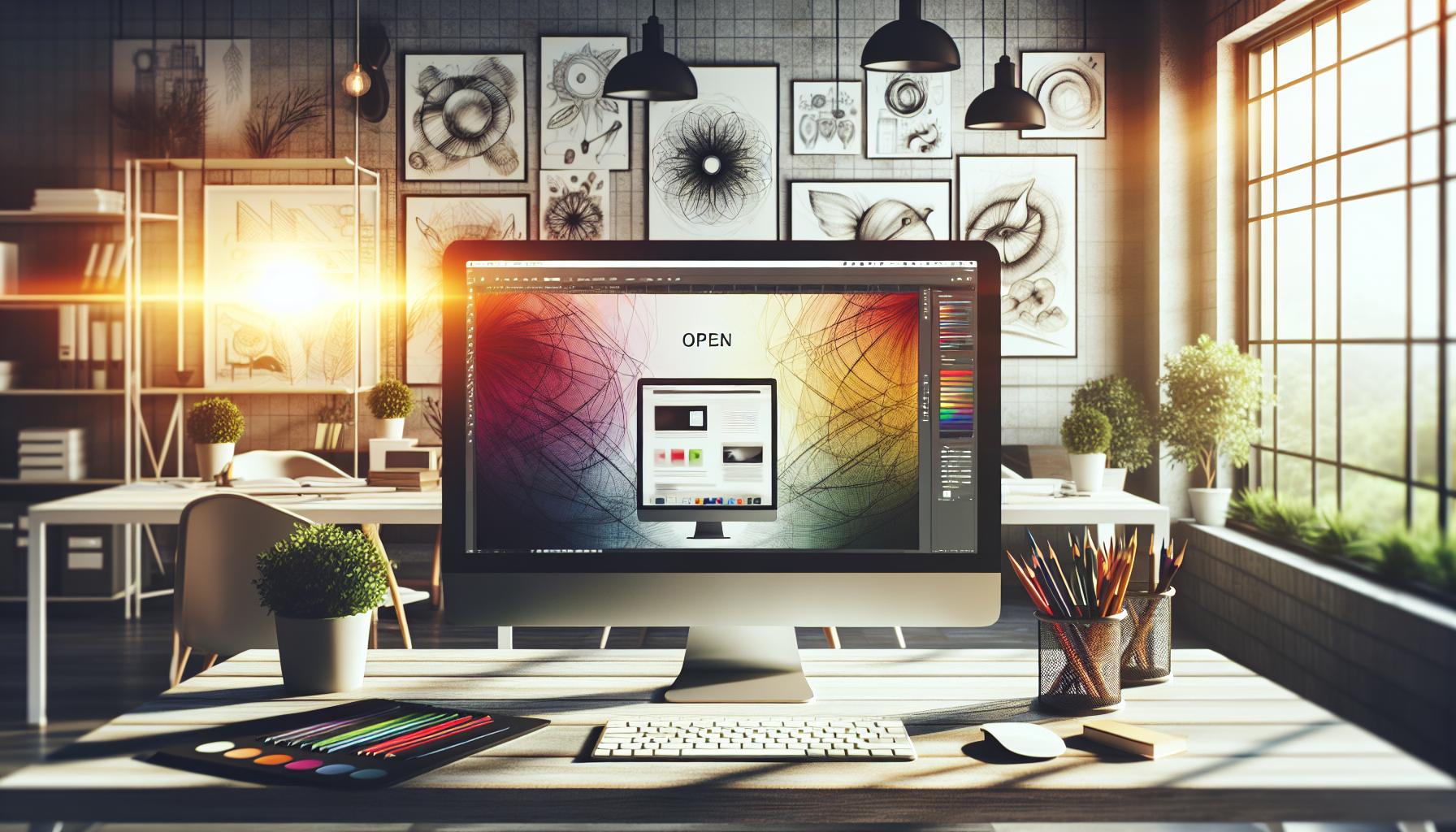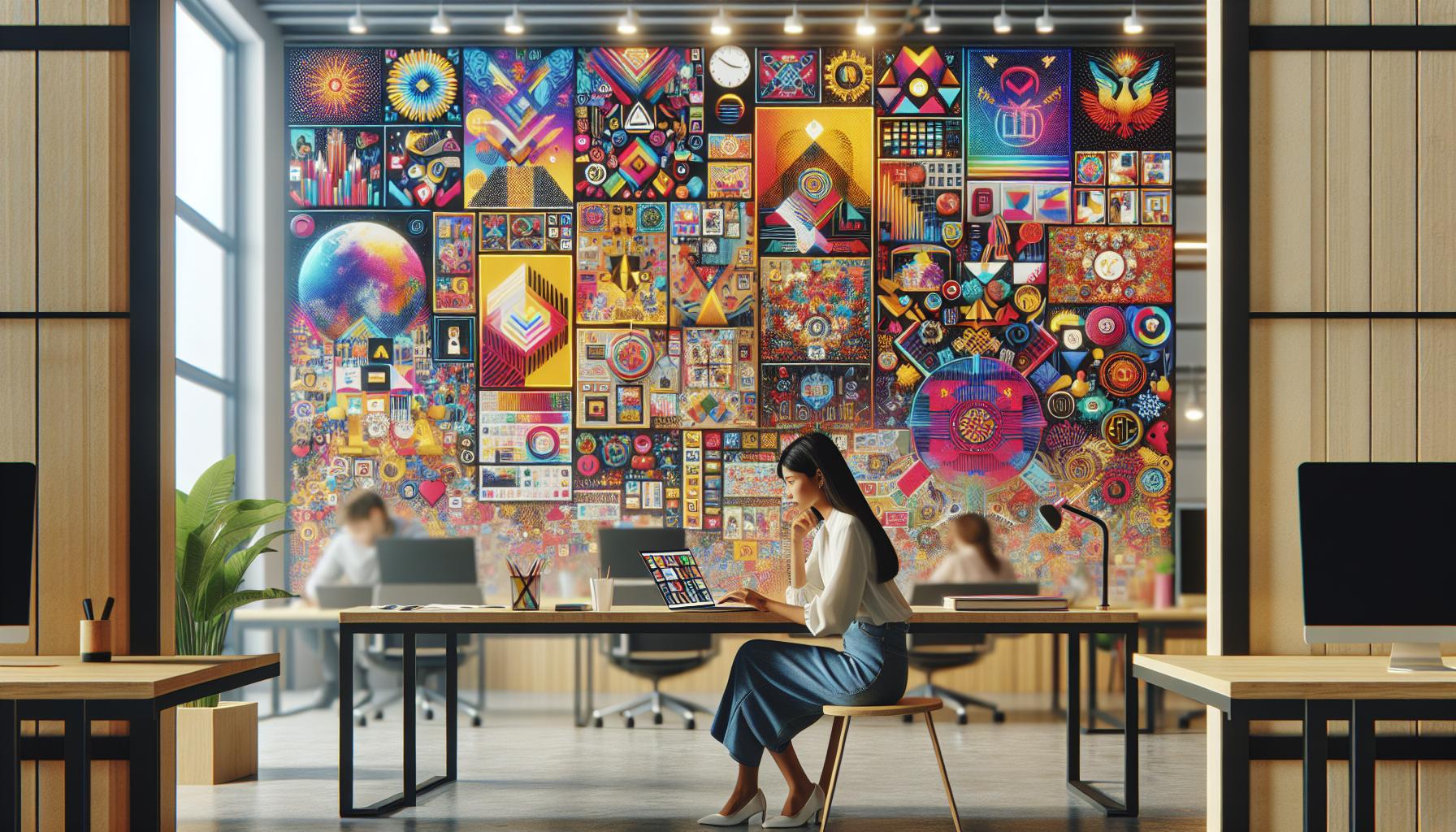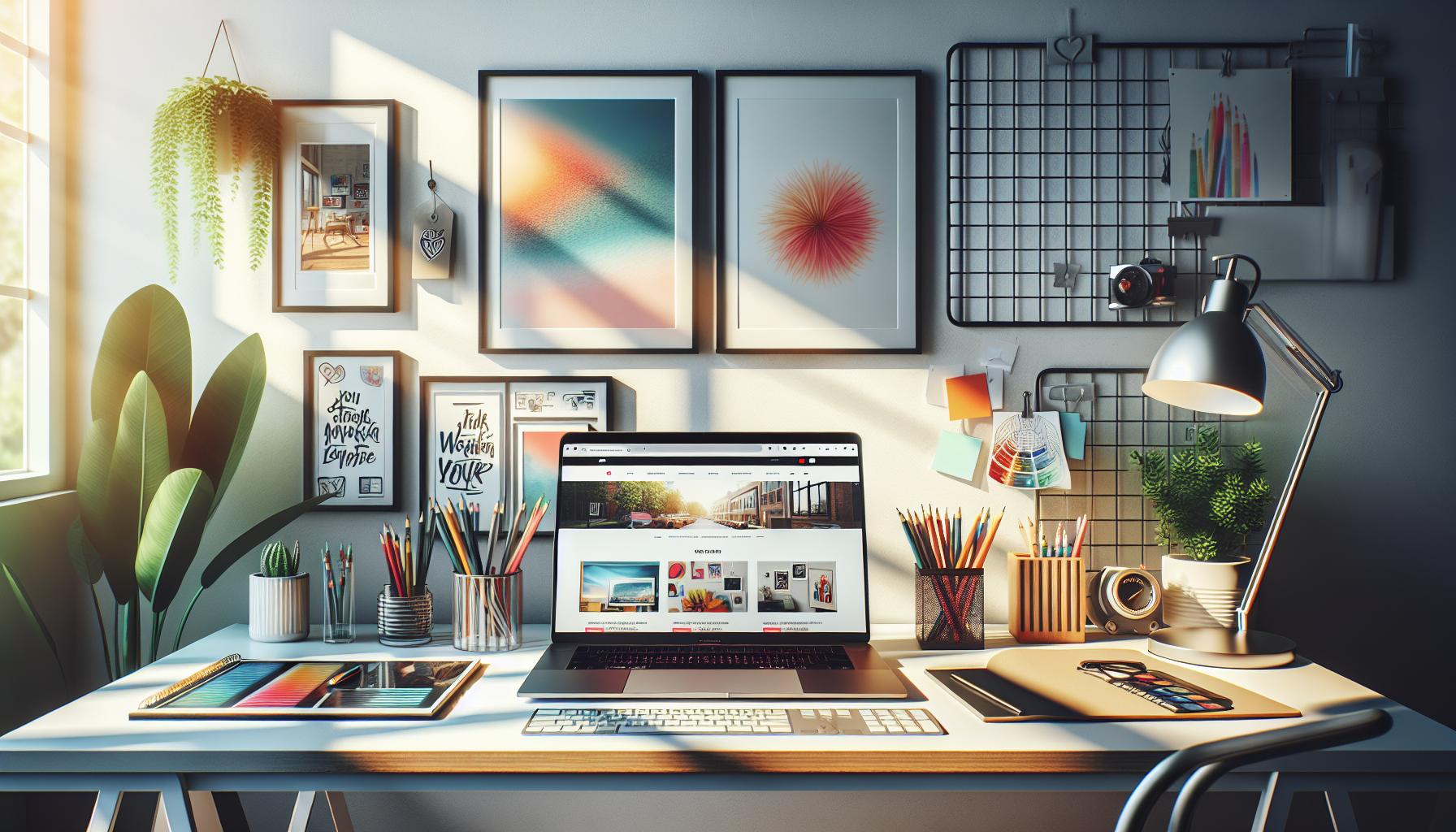Key Takeaways
- Innovative Web Design Matters: Creative web design ideas significantly improve user experiences and set brands apart in a competitive landscape.
- Embrace Minimalism: Minimalist design focuses on simplicity, enhancing usability through clean lines and ample white space, exemplified by brands like Apple.
- Impact of Bold Typography: Bold typography creates visual hierarchy and brand personality, capturing attention and improving readability, as seen with Netflix and The New York Times.
- Utilize Color Gradients: Color gradients can add depth and emotion to web pages, making them more engaging, a technique successfully employed by brands like Instagram.
- Prioritize User Experience: Responsive design and intuitive navigation are essential for enhancing usability, ensuring optimal viewing across devices and simplifying user exploration.
- Incorporate Visual Elements: High-quality images, custom illustrations, and consistent iconography enrich web designs, boost engagement, and effectively convey brand messages.
In today’s digital landscape, web design is more than just aesthetics; it’s about creating experiences that captivate users and drive engagement. With countless websites vying for attention, innovative design ideas can set a brand apart and leave a lasting impression. Whether it’s through unique layouts, striking color palettes, or interactive elements, the right design can transform a simple website into a powerful marketing tool.
Exploring fresh web design ideas not only enhances user experience but also boosts search engine rankings. As businesses strive to connect with their audiences, understanding the latest trends and techniques in web design becomes essential. From minimalist designs to bold typography, the possibilities are endless, and the right choice can elevate any online presence.
Web Design Ideas
Creative web design ideas can elevate a site from ordinary to exceptional. Utilizing innovative techniques can enhance user experience and increase engagement.
Minimalist Design
Minimalist design emphasizes simplicity and functionality. Clean lines, ample white space, and minimal elements create a focused user experience. This approach reduces clutter, allowing users to concentrate on essential content. For example, websites like Apple and Dropbox employ minimalist design, showcasing their products effectively without distractions.
Bold Typography
Bold typography captures attention and conveys brand personality. Using oversized fonts can establish hierarchy and guide user navigation. Implementing unique font combinations adds visual interest, creating a memorable impression. Notable brands like Netflix and The New York Times use bold typography to enhance readability and emphasize key messages.
Color Gradients
Color gradients create depth and dimension, adding vibrancy to web pages. Gradients can unify design elements and evoke emotions, leading to a more immersive user experience. Many brands, like Instagram and Spotify, leverage color gradients to create dynamic backgrounds and enhance aesthetic appeal while maintaining an engaging atmosphere.
User Experience Considerations


User experience plays a pivotal role in effective web design, influencing user engagement and satisfaction. Focusing on responsive design and navigation simplicity enhances overall usability and accessibility.
Responsive Design
Responsive design adapts websites to various device screens, ensuring an optimal viewing experience. Designers employ fluid grids, flexible images, and media queries for seamless functionality across desktops, tablets, and smartphones. For example, a website like Amazon adjusts its layout dynamically based on the device, providing a user-friendly interface that enhances mobile shopping experiences. Ensuring that text and images remain legible without excessive zooming increases user satisfaction and retention.
Navigation Simplicity
Navigation simplicity fosters intuitive exploration. Clear, concise menus and straightforward paths help users find information swiftly. Designers benefit from employing familiar structures, like top navigation bars or hamburger menus, which improve discoverability. An example includes the website for Wikipedia, where a clean layout and logical categorization guide users to desired content efficiently. Reducing visual clutter and limiting menu items to essential categories streamline the navigation process, promoting user engagement and reducing frustration.
Innovative Layout Concepts


Innovative layout concepts play a crucial role in enhancing user engagement and elevating the overall design of a website. They push creative boundaries and provide unique experiences tailored to target audiences.
Grid Systems
Grid systems offer structured frameworks that ensure consistency and alignment across web pages. They facilitate the orderly arrangement of content, making designs predictable and user-friendly. Various grid types include:
- Column grids: Used for traditional layouts, allowing content segmentation and readability.
- Modular grids: Divide space into smaller modules, perfect for products or portfolio showcases.
- Hierarchical grids: Employ a more complex structure to guide users through content in a prioritized manner.
Websites like Pinterest demonstrate effective use of grid systems, presenting images in a clean, organized manner that enhances visual appeal while maintaining usability.
Asymmetrical Designs
Asymmetrical designs create dynamic and visually interesting web pages by breaking traditional symmetry. They attract viewer attention and provide unique layouts that can differentiate brands. Key features include:
- Irregular shapes: Incorporate non-standard elements within layouts to create intrigue.
- Layering: Overlap images or text for depth and dimensionality, enhancing the visual experience.
- Varying sizes: Utilize different sizes for images and text to guide focus and encourage exploration.
Brands such as Apple and Squarespace leverage asymmetrical designs to enhance contemporary aesthetics, driving user engagement through striking visuals and innovative layouts.
Incorporating Visual Elements


Incorporating visual elements significantly enhances web design, strengthening user engagement and overall aesthetics. Effective use of images, icons, and illustrations brings life to content and helps communicate brand messages.
High-Quality Images
High-quality images play a vital role in capturing attention and evoking emotions. Websites using sharp, professionally taken photographs improve credibility and make a lasting impression. Brands such as Unsplash provide access to free, high-resolution images suitable for any project. Additionally, integrating images relevant to content boosts user comprehension and retention, aligning visuals with the site’s theme. Optimizing image file sizes ensures fast loading times without sacrificing quality, enhancing user experience across devices.
Illustrations and Icons
Illustrations and icons encourage creative expression in web design. Incorporating custom illustrations allows brands to communicate unique identities, capturing user interest through distinctive artwork. Successful examples include Dropbox, which uses playful illustrations to simplify complex concepts. Icons serve as visual shortcuts, improving navigation and conveying messages quickly. Consistent iconography reinforces branding while aiding usability. Using recognizable patterns, such as Material Icons or Font Awesome, ensures familiarity and accessibility across diverse audiences.
Embracing Innovative Web Design Ideas
Embracing innovative web design ideas is essential for businesses aiming to stand out in a crowded digital landscape. By prioritizing user experience and incorporating unique layouts interactive elements and effective use of visuals brands can create engaging websites that resonate with their audience. Staying updated on the latest trends not only enhances aesthetic appeal but also boosts functionality and search engine visibility.
Ultimately a well-designed website serves as a powerful marketing tool that invites users to explore engage and return. Investing in fresh design concepts is a strategic move that can lead to lasting success in the online realm.


